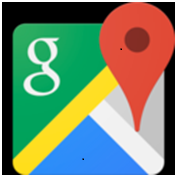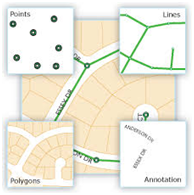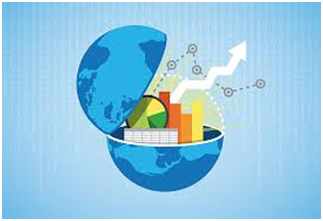 |
What’s with GIS? Who needs it and who cares? Well, the fact is that most people use Geographic Information Systems (GIS) technology on a regular basis without even realizing it. When’s the last time you used Google Maps? You guessed it – Google Maps is driven by GIS technology. |
|
GIS technology lets us visualize, question, analyze, and interpret data to understand relationships, patterns, and trends. It’s far more than mere “computerized mapping” since each map feature (a point, line, or polygon) holds information about itself, as well as about its relationship to all other map features. That’s why GIS is often referred to as “intelligent mapping”. |
 |
 |
GIS benefits organizations of all sizes and in almost every industry. There’s a growing interest in and awareness of the economic and strategic value of GIS. Whether you’re a small business, a multinational conglomerate, a senior government department, or local municipality, you can count on two things: a lot of your information will be geographically referenced, and the more information you have, the harder it becomes to manage and interpret. It’s a fact that up to 80% of all information in circulation possesses a common denominator: geography. In this case, GIS is important to you because it helps you make decisions based upon geographical information. Unlike any other type of information handling tool, GIS can understand the concept of location. |
|
GIS has taken off in a big way over the past two decades. Moving from the field of research, the technology was first adopted to the needs of large, information-hungry organizations such as government, environmental agencies, emergency services, and utilities providers. Now, GIS has evolved to find applications in every conceivable area of business activity. And it’s here that the logic of GIS is flawless, given that competitive advantage is ultimately about delivering the right product or service to the right place at the right time. |
 |
